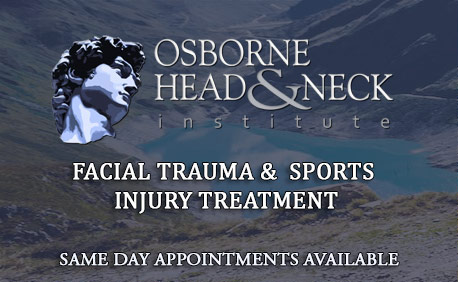Concussive Injuries

Any impact to the head is always worrisome. Not only could it result in facial fractures, it can also cause damage to vital organs such as the brain. The most common brain injury as a result of a trauma is a concussion. Our knowledge of concussions is improving and we are developing better methods to manage this serious but silent sports related injury.
Anatomy
Your brain floats in the skull surrounded by cerebrospinal fluid. A blow to your head or sudden acceleration and deceleration of the neck can cause the brain to slide forcefully into the skull causing injury. Minor injury may cause brief brain dysfunction causing you to lose consciousness, feel drowsy and confused. A more serious blow may cause bleeding that may be fatal.
Diagnosis
How do I know if I had a concussion?
After any head trauma, especially one that leads to slight confusion or black out, you should be evaluated for a concussion. The evaluation can be done by your coach, parents or your doctor and includes several mental, memory and special challenges. If you are in a sports team a pre-season evaluation has likely been performed and the results of your current evaluation would be compared to the one done during the pre-season.
When should I see a doctor?
Anytime you suspect that you had a concussion you should see a doctor. It is also important to see a doctor anytime you have had severe enough blow to your head that resulted in loss of consciousness or confusion, as these are telltale signs of a concussive injury. The doctor will perform;
Neurological exam
To test your cognitive and motor skills. Any deficit may be a sign of more severe injury.
Imaging tests
Brain imaging may be required after a concussive injury. This may include CT Scan or MRI. The need for scanning is based on the severity of the injury or the potential for complications.
Observation
Concussive signs and symptoms may progress after the initial injury, especially if bleeding occurs slowly or delayed after trauma. Observation at home or in a hospital setting may be necessary to monitor for progressive signs of worsening brain injury.
Treatment
How is concussion treated?
Rest is the number one treatment for concussive injury. If you or your child sustained a concussion while playing competitive sports avoid resuming activities too soon. This increases the risk of a second injury and fatal brain injury. No one should return to play any sport while signs and symptoms of concussion are still present. Children should not return to the sport that day.
Headaches and soreness can be treated with Tylenol. NSAIDS (motrin, advil, etc.) should be avoided because they increase the risk of bleeding.
How can a concussion be prevented?
These recommendation may guide you in minimizing your risk of head injury and concussion:
Wear protective equipment during high risk recreational sports like skiing, snowboarding, bicycling, and skateboarding. Always use the appropriate protective equipment for any sport involving your child. If you have a history of concussive injury you should avoid high risk activity that may place you at risk for reinjury.
Always wear a safety belt. Seat belts help prevent serious injury by maintaining your position in a vehicle. Being thrown around a vehicle or out onto the street places you at high risk for head injury.
Avoid injury to small children. Head injuries in children can be avoided by the use of child safety gates and locks, padding counters and tabletops, and monitoring your child’s play, especially around play yards and swimming pools.
What are the long term effects of concussions?
Seizure disorder, life long cognitive impairment, and fatal traumatic brain injury are potential long-term effects of repeated concussive injury.

